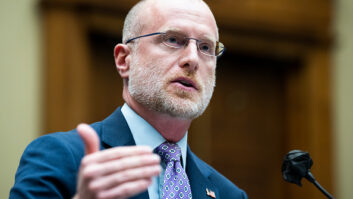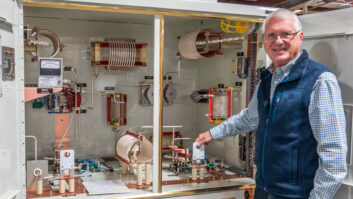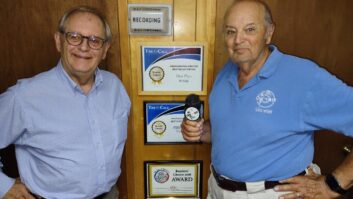This version clarifies wording in the first paragraph.
NPR Labs has released the results of its 18-month study of digital coverage and interference analysis, including a serious look at elevated power levels. The study was funded by the Corporation for Public Broadcasting.
Much of its findings we’ve already reported; for example, that in general, raising the digital power level would substantially improve the reception of auto, indoor and portable HD-R receivers. However, now we can get a handle on the meat of the probable interference issues if the digital power levels are raised.
NPR Labs looked at how the IBOC power levels at 1% and increasing to 10% would affect 75 noncoms.
“Unqualified 10% IBOC transmission power is predicted to cause substantial interference to analog reception of a significant number of first- and second-adjacent channel stations,” concludes NPR Labs.
It also takes a hard look at the costs of optimizing transmission equipment to accommodate any digital power increase for noncoms and concludes, “Initial projected system-wide estimates of the costs of deploying a combination of optimization strategies for indoor digital coverage parity could approach a doubling of transmission investments.” Ouch.
It says there appears to be little difference in the potential impact on IBOC on analog service between the reserved and non-reserved bands.
What They Found
In general, the lab found that at the current 1% IBOC power on all stations, auto (or what they call mobile) only slightly underperforms quality analog coverage (85%), while indoor (38%) and portable coverage is substantially smaller than analog.
At 10% IBOC transmission power, most stations would gain covered population, approximately equaling analog indoor and portable and exceeding auto. However, they’d pay the price from digital interference to their analog signals. At this power level, stations would lose an average of 26% of their FM auto population coverage because of IBOC interference, the lab concludes. “Interference would affect some stations severely,” 41% could lose a third or more of their covered population and 18% would lose more than half of their population.
And how would a 10% IBOC level affect indoor and portable reception?
The digital covered pop totals would be 83% and 81% of analog coverage, respectively. Analog FM indoor and portable covered pop totals are reduced by 22% and 6% respectively due to interference from the digital signal; 27% could lose one-third or more of their covered pop and 16% could lose more than half of their population, said NPR Labs.
What to Do?
Don’t expect IBOC receivers and antennas to improve enough to be able to handle the digital coverage shortfall, according to the report. John Kean also said this at the spring NAB.
Transmission-based remedies worth exploring include the use of single-frequency network boosters to improve indoor digital coverage while controlling analog interference effects. The lab also says raising the IBOC power in increments, under the proposed 10%, should be developed and tested as well as the use of separate directional antenna systems and asymmetrical IBOC sideband power.
More testing of the impact of raising the IBOC power levels on HD-R receivers is needed, says NPR Labs, including testing of radio reading service SCA receivers, to develop a national policy for sideband power increases.
The results differ greatly than those of 18 organizations, mostly commercial radio groups, that have asked the FCC to bless a voluntary digital power increase of up to 10% from the current –20 dB up to –10 dB (see Radio World, Aug. 1, page 3). The coalition said its tests results found there would be “minimal risk of harmful interference” to the existing analog service.







